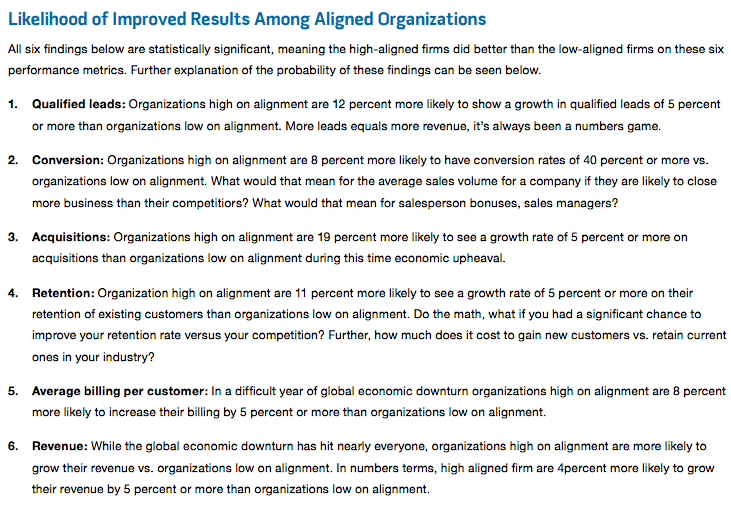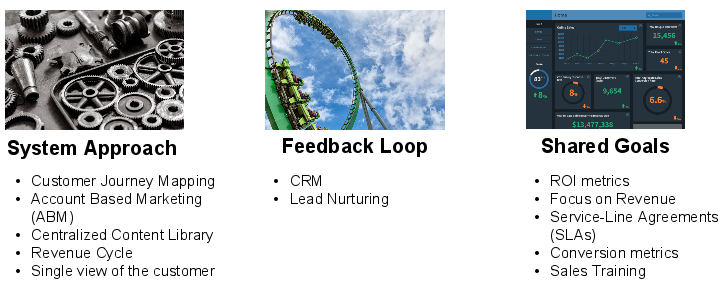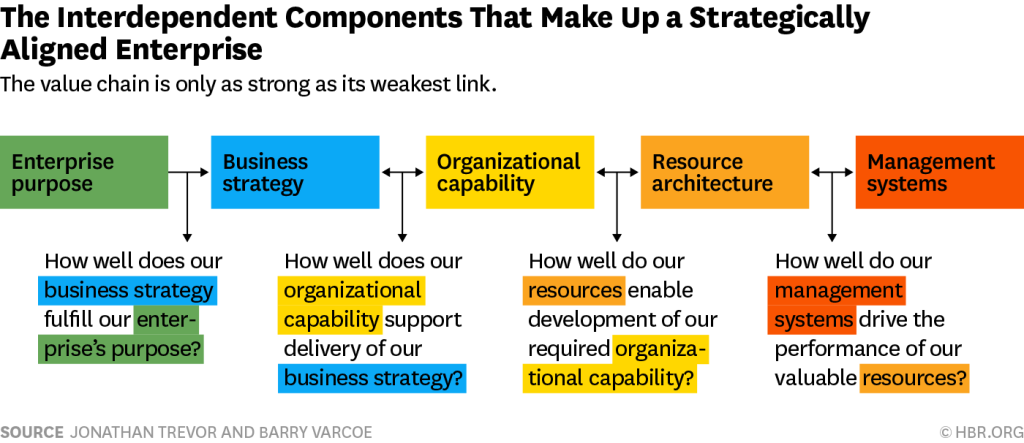This guest blog was written by Mindi Rosser over at mindirosser.com
You’ve heard about social selling. You know you need to be active on social media to get the most from your sales efforts. But, you already have a way of doing things to get the sale. Is it even worth throwing social media into the mix? Or trying something different on social media? This article will demonstrate why social selling is worth the effort if done right and how you can put together a social selling strategy based on your experience.
The secret to doing social selling well is using the right social media stack (a group of technologies that salespeople leverage to execute, analyze and improve their social media activities) and tailoring it to the B2B salespeople. Here are some tools that salespeople can use that are effective in selling and that marketing can help salespeople actually execute.
According to CSO Insights, good social selling training increases win rates by 38% and quota attainment by 51%. If you are not yet comfortable using social selling, now is the time to get started.
You’re not interested in using social media for social media’s sake. You want social media efforts to help you get the attention of your buyers and move them through the sales process. Which social selling tools should you be using?
If you are just getting started on social media, there’s no point in building an elaborate stack, you want to keep it simple. If you are an advanced user, you are looking for ways to up your game and generate better ROI from your efforts. No matter whether you think you’re an expert or consider yourself a newb, check out the tools in each stack and exactly how to use them. You may find a new tactic to try with that tool.
The Beginner Stack
This stack is ideal for those of you who want to spend 15-60 minutes per day on social channels. You may not be extremely comfortable using social media, but you know it’s important, especially within a complex sale environment.
Here’s the stack I would recommend:
Yes, only two tools. If I had only two tools to use in my social selling efforts, it would be LinkedIn and Twitter. Here’s why.
LinkedIn
50% of B2B buyers use LinkedIn when making purchasing decisions Your buyers are on LinkedIn, and they are researching your company and looking you up on LinkedIn.
If your profile does not stand out, you are missing a huge opportunity to differentiate yourself. Personal branding matters. Make your profile about how you can help buyers, and they will take a call or book a demo.
With the new LinkedIn user interface, they can easily tell if you are active or inactive on LinkedIn by the types of activity on your profile. Be sure to engage regularly with your network to appear active.
Twitter
While LinkedIn is a one-to-one network, Twitter is typically used as a one-to-many network. Marketers tend to love Twitter because they can do more broadcasting and drive traffic to websites. For sales purposes, you can set yourself apart by using Twitter as a one-to-one network.
By monitoring keywords, questions and conversations from buyers, you can identify opportunities to engage with them. Being helpful—without coming across as too salesy—goes a long way on Twitter. Look for ways to be helpful, whether or not it results in a direct sale, and you will become a trusted source on Twitter. This video interview by the Salesman Podcast with Jamie Shanks emphasizes the importance of aligning with influencers in your industry and becoming part of the conversation.
Beginner Stack Checklist:
- Post one status update per week on LinkedIn.
- Like or comment on someone else’s LinkedIn status update daily.
- Follow your prospects’ LinkedIn company pages.
- Spend time going through your LinkedIn feed daily.
- Tweet once a day about something prospects would find helpful or interesting.
- Set up a monitoring system on Tweetdeckuse keywords, hashtags and search terms related to what you are offering
- Check into Tweetdeck daily to see if there conversations where you can be helpful.
- Follow prospects and prospect companies on Twitter.
The Intermediate Stack
If you have mastered the basics of social selling with LinkedIn and Twitter, you might be ready to add a couple new tools to your stack. These do take an additional investment, especially if you are springing for a Sales Navigator account on your own dime. But, a Sales Navigator account will help you shave at least an hour per day, once you have optimized your account.
Here’s the stack I would recommend:
- LinkedIn Sales Navigator
- Social Scheduling Tool
LinkedIn Sales Navigator
Sales Navigator is built on LinkedIn’s platform and is tailored to the B2B sales professional, who is trying to identify prospects at target companies, connect with them, organize them, keep in touch at the right time and get their attention.
If you are trying to close complex sales using only the free version of LinkedIn, you will lack advanced search, monitoring and messaging capabilities. You can technically work around these features on the free or premium versions of LinkedIn, but it’s not worth the trouble.
One of the benefits to using Sales Navigator is connecting it to your CRM and pushing data between the two platforms. On its own, Sales Navigator is powerful, but the real power is in the integration with your sales technology tools.
If you have a Sales Navigator account and want to use it like a boss, I would recommend this article by Tony Hughes. He shows you exactly how to make the most of your investment.
Social Scheduling Tool
We’ve discussed the importance of sharing relevant content across social media, but it can be challenging to remember to do this every day. That’s where a social scheduler can help.
Marketers like to give you their formulas for the amount and types of content you should be sharing in pretty ratios, like the 411 strategy, but what salesperson wants to plan their content with this formula? None that I know!
A better rule of thumb is to share some of your own content, whether this is your company’s content or your own thought leadership content, and other people’s content. As long as you are sharing both types, you can build trust with your prospects.
To share this content frequently, you need to use a social scheduling tool to sprinkle that content over a span of days. For many B2B companies, the work week is a typical 9-5, Monday through Friday work week. Set your social scheduling tool to post during those times.
Two tools I’d recommend are Buffer (the free plan works well for most salespeople) and Hootsuite (if you want an all-in-one tool that can schedule to all your social channels and monitor Twitter).
During the week, when you come across content that might be helpful to your prospects, add it to Buffer (if you know you want to share it) or to InstaPaper (if you want to read the article later and decide whether or not to share it.)
At the beginning of each week, check your social scheduling tool to be sure you have enough content in there to share to Twitter at least daily (if not 3-5x per day) and to LinkedIn at least daily. If you do a good job of filling up your queues as-you-go, you might not need to add more content to your queues.
The Advanced Stack
You’ve moved beyond the basics and mastered Sales Navigator and are sharing great content. It’s time to amp your stack and get the most from your social selling efforts. This is where personal branding and thought leadership can help top sales performers edge out their competition. When a prospect comes across you and a competitor on social media, who will they trust more? The one with a few pieces of thought leadership content, an optimized profile and a history of interacting on social media.
Here’s the stack I would recommend:
- LinkedIn Pulse
- Advanced Social Listening Tool
LinkedIn Pulse
When I suggest to salespeople that they need a personal brand and thought leadership content, I often get the line, “I don’t have time for that marketing stuff. I’m too busy selling.” I get it. B2B sales is challenging and takes a lot of time, hustle and grit.
LinkedIn’s study shows that 92% of B2B buyers engage with sales professionals who are known as industry thought-leaders.
You don’t need to generate a lot of content, but you will get an edge if you publish interesting content to LinkedIn Pulse. And, it’s not about getting a large number of views or engagement. It’s about having a relatively fresh piece of content that answers buyer’s questions or touches on a hot topic in the industry.
If you prefer to outsource the writing part, you could ask a content marketing or sales enablement team member for help in creating and/or publishing your content. I find that most marketers are more than willing to co-create content or ghostwrite articles. You can also repurpose content or interviews you have done elsewhere in the past 3-6 months.
As for frequency, I would suggest publishing one article to LinkedIn Pulse every 30-60 days. This demonstrates to prospects that you are current on what matters to them and how your company is best suited to solving their problems.
Advanced Social Listening
You are already accustomed to using Tweetdeck or Hootsuite to monitor online conversations, but you can take that monitoring to the next level with a tool, like SproutSocial. It is geared towards marketing agencies, but I’ve found that its functionalities are well-suited to social selling.
The best feature for social sellers is the Smart Inbox. In less than five minutes, you can set up some advanced searches with keywords specific to your buyers. Then, you can be alerted to any questions/comments/conversations on Twitter (and even Instagram) that use those keywords. This is one of the best ways to never miss a social conversation that pertains to you and your company.
When you catch these conversations, you can jump in with a helpful suggestion or an answer to their question. This is not the time for a company pitch. If your suggestion is helpful, they will check out your profile and notice which company you work for. This builds your credibility and that of your company. They will subconsciously associate your company with trustworthiness. And, that’s exactly what social selling is all about.So, there you have it. Six tools to use in your social selling toolbox. Which of these do you plan to try next? Any that you want to learn more about? Let’s discuss! You can tweet me @mindirrosser or connect with me on LinkedIn.
















